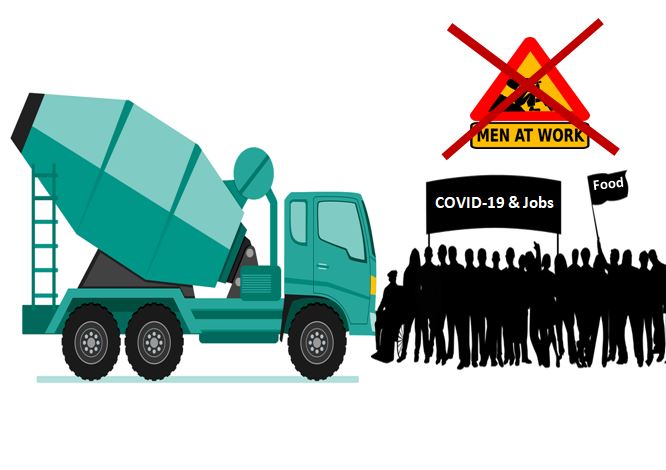Lockdown Impact -The Plight of Migrant Workers

Migrants workers are the backbone of the Indian Economy. The nationwide lockdown due to COVID 19 crisis has left them with no work or food which caused immense distress to them. Since the shut down of economic activities, they are walking across India desperately to return to their native places and reunite with their families
Background
Census of 2011 finds out that there were 139 million interstate migrants who moved for all reasons ranging from education to marriage or employment. People from Uttar Pradesh and Bihar as well as other Hindi-speaking states are the main source states, while Maharashtra, Delhi, Gujarat, Uttar Pradesh, and Haryana are at the receiving end and absorb half of the migrants.
Role Played by Migrant Workers in Economy
Migrant labor makes enormous contributions to the Indian economy through major sectors like textiles, construction, stone quarries and mines, brick-kilns, small-scale industry, crop transplanting, sugarcane cutting, rickshaw-pulling, fish and prawn processing, salt panning, domestic work, etc. As per a survey, the economic contribution of migrants is around 10% of India’s gross domestic product (GDP).
Migrant workers also include construction workers painters, cooks, delivery boys, factory workers who have traveled far to earn a livelihood without any social protection, health care benefits, or a decent standard of living. They are the perfect flexible workforce.
Multiple Deprivations surrounding migrant workers
Migrants workers have few civil rights and no political voice in shaping decisions that impact their lives. They come from poor families where access to physical, financial, and human capital is limited and where prospects for improving living standards are constrained by their inferior social and political status. Poor migrants are absorbed in informal sector jobs, much-maligned for being insecure, poorly paid, and unproductive.
Impact of COVID 19
The abrupt lockdown on March 24 with just four notice has made it even harder for these people to weather the challenge. Hunger, Humiliation, and fear of the disease made thousands of these migrants to walk thousands of kilometers to get home. The sight of an endless stream of migrant workers carrying their child barefoot and set on the journey of hundreds of kilometers will remain indelible to our memory in the years to come. It will remind us of the stark inequality that exists between the have and have nots, the rich and poor, workers, and the employer in the emerging economy like India.
An estimated 122 million people lost their jobs in April alone and three-quarters of these were small traders and wage laborers, according to the data shared by Centre for Monitoring Indian Economy (CMIE)
Labour laws
Laws that are supposed to protect the rights of these workers are the Inter-State Migrant Workmen (Regulation of Employment and Conditions of Services) Act, 1979 and the Unorganised Workers’ Social Security Act, 2008 which have proved to be an eyewash, offering little protection to this dislocated workforce on the ground.
Several states like Maharashtra, Madhya Pradesh, Uttar Pradesh, and Gujarat have announced a slew of labor law suspensions. These decisions without any policy backing could prove delirious to the health of the economy.
Way Forward
The immediate need is to change the policy level discourse on migration by reviewing key documents and policies. India needs to take a stronger position on protecting migrant workers. The country needs to take steps to improve their access to education, housing, and health.
With nearly eight crore migrant workers returning to their villages, and with an additional allocation for the year, this could be a moment for the true revival of MGNREGA.
Without such recognition and employment benefits, large parts of the population will continue to be excluded and this will compromise India’s prospects for alleviating migrants suffering and poverty reduction while reaching the Sustainable Development Goals Target 2030.
Like Our Page To Get Blogs & Market Updates



